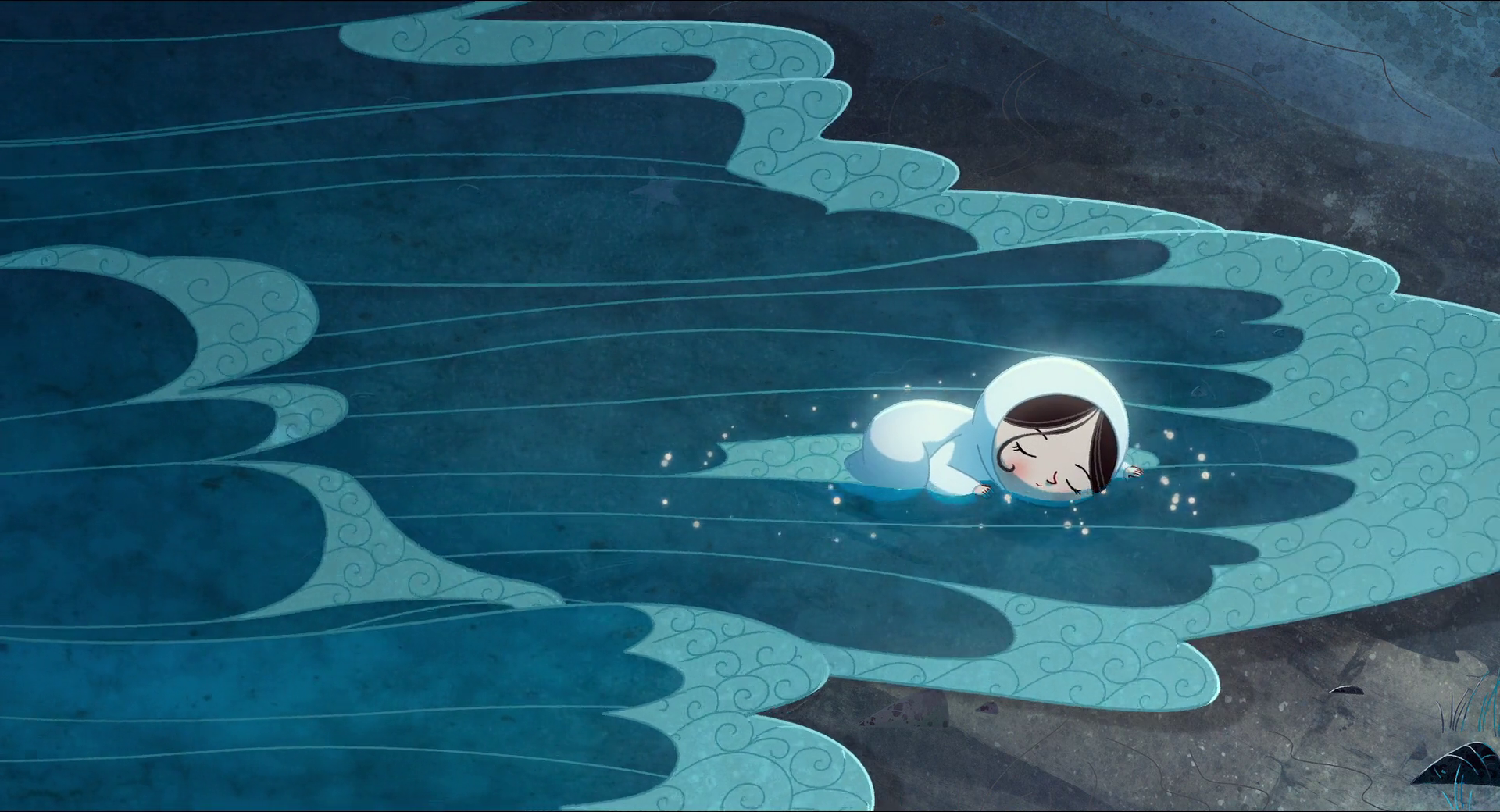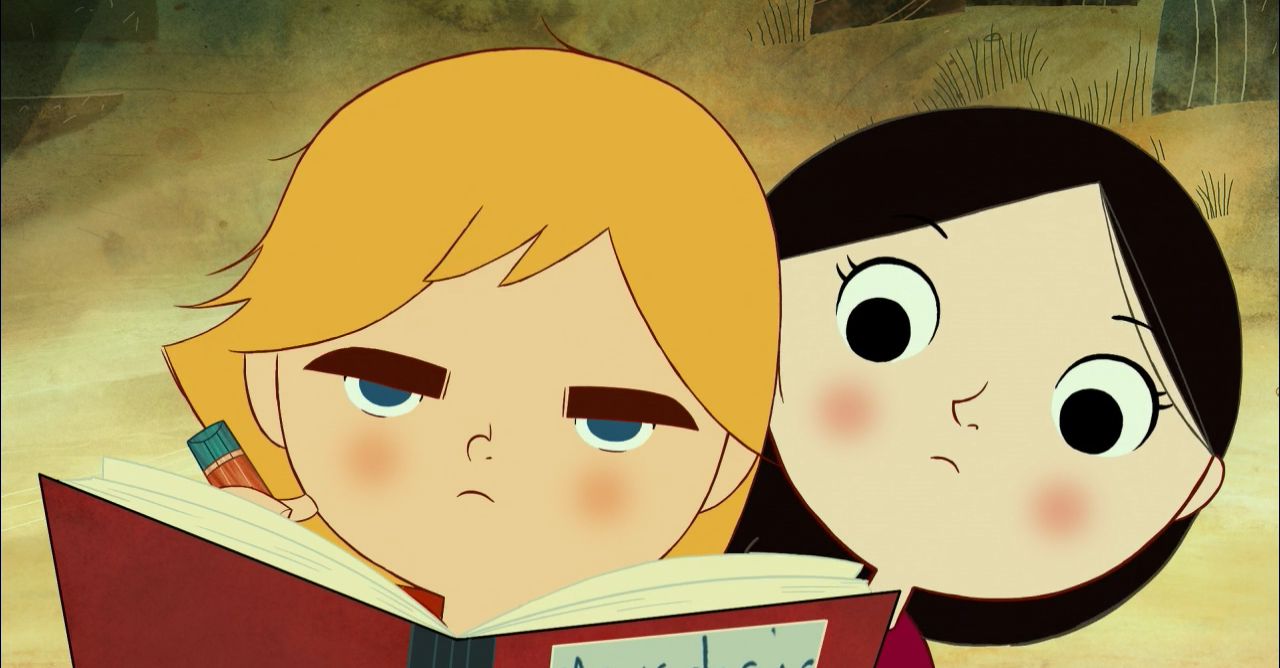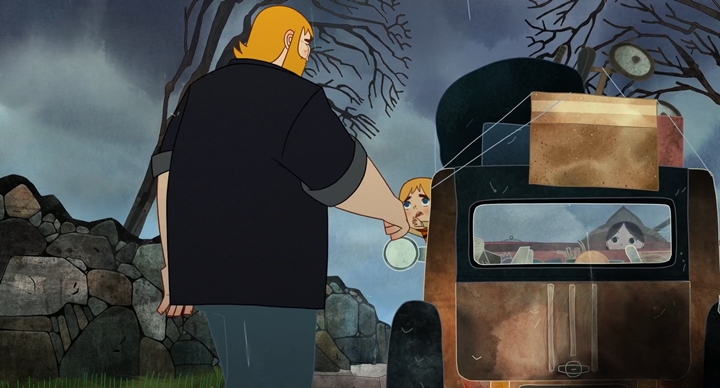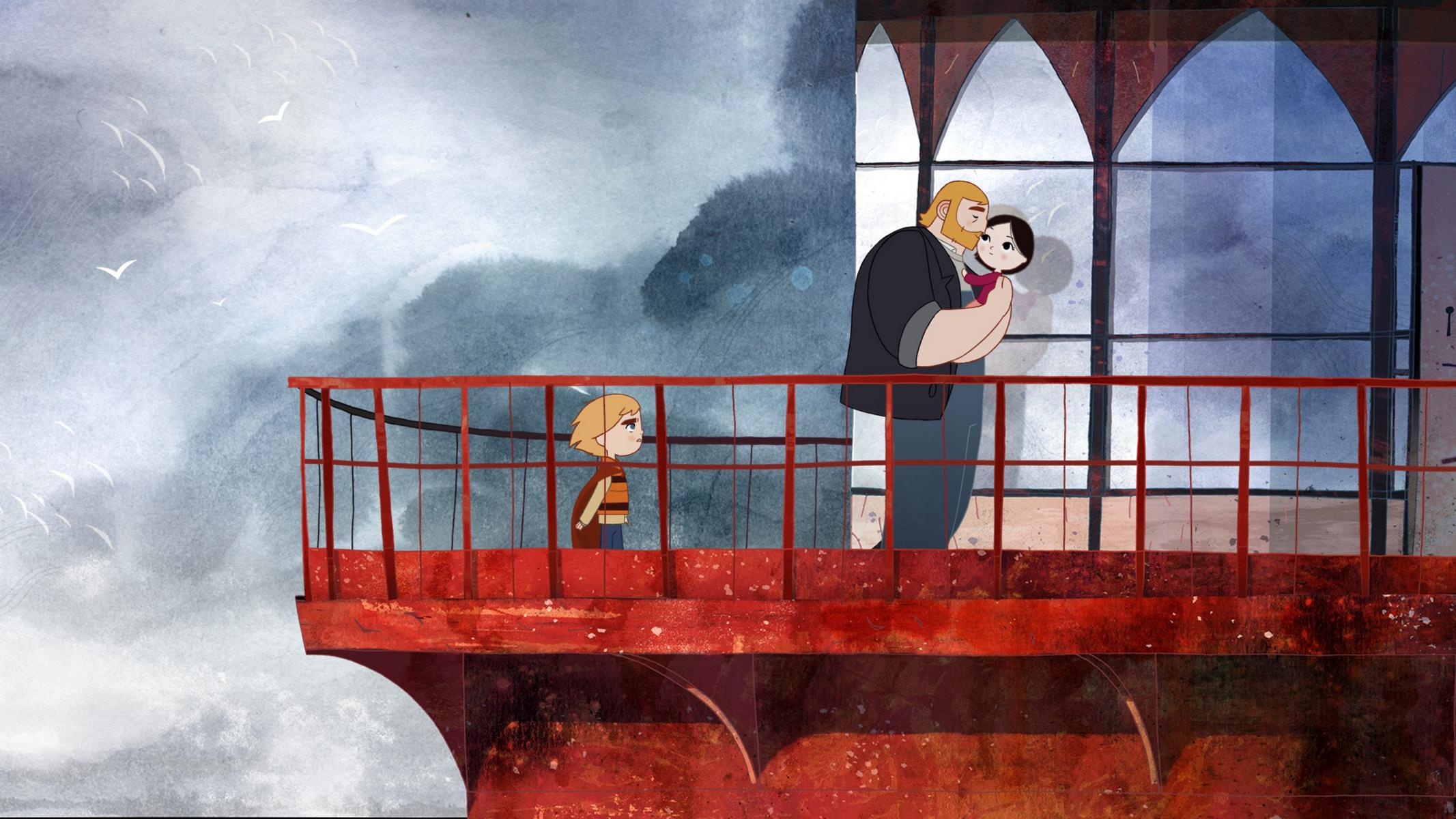Table of Contents Show
Song of the Sea, directed by Tomm Moore and nominated for Best Animated Feature at the Academy Awards in 2015, is a beautifully animated film about a brother and sister’s journey to send home the mythical faeries of Ireland, known as na daoine sídhe. Ten-year-old Ben and six-year-old Saoirse learn a lot about themselves and their family over the course of a couple of days, particularly that both Saoirse and her mother, Bronagh, are selkies. In Irish myth, a selkie is half-woman, half-seal; when a selkie takes off her seal’s coat, she becomes a human, but when she dons the coat in the sea, she becomes a seal. Though these myths are essential to the plot, the message of the movie centers more on the importance of emotional comprehension and communication.

Anyone who has viewed Song of the Sea knows how much it highlights emotions and feelings, especially grief and pain. Conor is paralyzed with grief for most of the film, while Ben is angry and filled with resentment towards Saoirse, whom he blames for his mother’s disappearance. There is a lack of emotional understanding featured in the main characters of Song of the Sea, but a large part of this problem is exacerbated by improper communication. The story can easily be understood as a lesson against bottling one’s painful feelings and an interesting comment on communication, or lack thereof.
The Mutism Of Saoirse And Conor
Song of the Sea opens on a family riddled with grief, and two out of three members ensnared in some form of mutism. One of the first things the viewer discovers about Saoirse is the fact that she cannot speak, indeed, she has never spoken. This trait is not explained further besides Conor telling his mother, the children’s Granny, that the doctors believe Saoirse will talk in her own time. Later, we find out that Saoirse can’t speak because a part (really, half) of her identity hasn’t been communicated to her.
Due to Conor’s unprocessed trauma and grief, Saoirse isn’t told the truth about what she and her mother are. She discovers the trunk containing her selkie coat and her ability to turn into a seal on her own, even though Conor had always known what she was. After discovering his daughter’s nighttime swim, he locks the coat back into the trunk and hurls both it and its key into the ocean.
This second separation from her coat (the first being when Conor hides it away initially, likely right after her birth) results in Saoirse’s illness and fatigue. It can be inferred that Saoirse’s mutism stems from her distance to her true identity as a selkie, as she cannot speak in most of the movie, except when she is reunited with her coat and must sing the “Song of the Sea.”

Bronagh’s disappearance clearly scars conor. Because he sees Saoirse as the only piece left of Bronagh, he purposely denies his daughter the right to understand her full identity in the hopes of never losing her. Of course, none of this is explained to Saoirse. When Granny finds Saoirse washed up on the shore after her first swim like a seal, she deems the family’s island home an unfit place for children and takes both Ben and Saoirse away. Saoirse likely becomes confused when Granny takes her away from the ocean, the place where she has truly felt like herself. Therefore, Conor’s silence about Saoirse’s selkie identity is the main reason behind Saoirse’s mutism.
Lack Of Communication Between Father And Son
Conor’s communication problem isn’t reserved for his daughter. In fact, it can be seen as an even larger impairment with Ben. Conor’s lack of communication is the main reason for Ben’s feelings of hatred towards his sister, as well as his tendency to act out.
The Roots Of Silence
Later in Song of the Sea, we (and Ben) see an extended version of the devastating scene involving Bronagh’s departure. In the beginning, Ben sees his pregnant mother run away from his bedroom, her hair turning white. Conor then chases her outside, where he finds her in the ocean. Bronagh apologizes and claims she must do what’s best for their baby; a wave swallows her up, and Conor runs into the ocean. Heartbroken, he comes back to shore carrying the baby Saoirse, but with no sign of Bronagh. As Conor sits sadly by the fire with Saoirse, a young Ben approaches him and asks where his mother is.

Conor refuses to acknowledge this question directly and instead shows him Saoirse, saying, “Say hello to Saoirse. This is your sister. You’re her big brother. You must always look after her.”(( Moore, Tomm. Song of the Sea. Cartoon Saloon, 2014 )) With this introduction, Ben’s face grows sullen and angry. It is clear that he now associates his mother’s disappearance with Saoirse and resents her for it. What could have been resolved with an explanation from Conor (either in that instant or at any point in time afterward) becomes a point of pain and hatred within Ben that festers for the next six years.
What’s so important about this particular scene is that it explains the beginning of the family’s dynamic and the root of the family’s problems. When Conor, in his misery and grief, chooses to stay silent about what really happened to Bronagh, he allows Ben to blame Saoirse for something that isn’t her fault. When the present-day Ben sees this memory unfold, he understands how this led to his hatred of Saoirse and cries.
Trauma Of Change Without Reason
When Granny finds out that Saoirse swam in the sea at night, she deems Conor’s lighthouse home a place unfit to raise children and demands to take the children to Dublin to live with her. Conor relents, but Ben loudly refuses to accept this new change. Throughout the scene, no one gives Ben any explanation. The only thing he knows is that he and Saoirse must move because she ran into the sea at night. This becomes yet another thing he blames her for.
As Ben is forced into Granny’s car without Cú, his canine best friend, he asks his father why he can’t stay with him. With no way to process his overwhelming emotions, Conor becomes angry and yells at Ben to stop it. Conor immediately sees the damage he’s done when Ben starts to cry, but he doesn’t apologize. Instead, he offers Ben his hand through the car window before Granny drives the children away.

“No, Dad, no! It’s Saoirse’s fault, not mine! Why do I have to go?”
Ben to Conor in Song of the Sea (2014)(( Moore, Tomm. Song of the Sea. Cartoon Saloon, 2014 ))
Effectively, Ben is given no true explanation (at least on-screen) as to why he’s being forced to move in with his Granny, why he’s being taken from a father who won’t fight for him to stay, and why he’s being separated from his best friend. For a grieving, angry child, this drastic change alone seems unsettling and overwhelming but combined with the lack of communication surrounding it; the change seems traumatizing.
Child Favoring And Lack Of Communication
There are other times in the film where Conor refuses to communicate with Ben. In the first few minutes of Song of the Sea, Saoirse walks into the ocean, despite Ben’s protests that the sea is dangerous. Afraid and angry, Ben drags Saoirse to Conor and demands that Conor watch Saoirse from now on. Conor has his back to his children and doesn’t even seem to hear Ben as he complains about Saoirse’s supposed disobedience. After several seconds of Ben’s shouting, Conor finally turns around.
Instead of responding to Ben or any of his concerns, Conor lifts up Saoirse and only talks to her. Ben protests the whole time, but Conor doesn’t seem to hear him. When Conor eventually walks away with Saoirse, the viewer can clearly see how hurt Ben is. Conor’s withdrawal is clearly noticeable to Ben, who tries his best to get an ounce of his father’s attention and fails.

Ben yells at his father constantly, attempting desperately to make Conor notice and respond to him. But without even speaking, his mute sister receives both verbal and physical affection from his father. Naturally, this scene does nothing to decrease Ben’s hatred towards Saoirse; it only adds jealousy to the swirl of negative emotions that Ben feels.
Conor’s lack of communication has negatively affected both of his children. This isn’t to say that a person who constantly communicates is better than a person who communicates rarely. Still, there was ample space for essential healing and explanation that Conor did not provide Ben and Saoirse. Song of the Sea shows how deeply people can be impacted by their emotions, as well as the results of no emotional processing and communication.
Song As A Form Of Communication In Song Of The Sea
In a film titled Song of the Sea, one would expect music to be held in high esteem. Two songs, in particular, the titular “Song of the Sea” (“Amhrán na farraige” in Irish), and “Dúlamán,” (the tune of na daoine sídhe) are sometimes the primary form of communication and expression used in the film. These songs hold great importance in the movie as a whole, as they not only help the passage of language and meaning between characters, but they also possess great power.
“Song of the Sea” is the first song featured in the film; sung by Bronagh to Ben, its hauntingly beautiful melody reoccurs throughout the movie as both diegetic and non-diegetic sound. Bronagh left behind a special musical instrument, a seashell with carved holes in it, often played by Saoirse. When this occurs, small white lights appear and lead her to something magical and necessary for her journey at the moment. This is how she finds her coat and the holy well. Playing “Song of the Sea” on the shell can also enact change. When Saoirse plays it in Macha’s house, the jars containing the Owl Witch’s feelings break open, which is how she and Ben bring Macha back to herself.
And of course, this is the song that Saoirse sings to release na daoine sídhe from their stone prisons and send them home. Even more significant, some of Saoirse’s first spoken words are sung in “Song of the Sea,” showing how truly sacred the film shows the song to be. It connects Saoirse and Ben to their mother, as well as Ben to Saoirse, as he helps her sing the song to release the faeries. This “selkie song,” as it were, gives Ben, a human child, access to the magical world of his mother and sister and connects him to them.

“Dúlamán” also represents a bridge from the human world to the faerie world. When Ben proves that he knows the words to the song, na daoine sídhe in Dublin and in the waters of the holy well (The Great Seanachaí) trust him and give him and Saoirse knowledge about how to proceed in their journey. “Dúlamán” is also a form of communication, as na daoine sídhe sing it for Saoirse in thanks for sending them home.
Emotional Processing Via Communication
Overall, Song of the Sea is a lesson in learning to release and process your emotions because bottling them (or, in this case, jarring them) means denying oneself a wholistic existence. Though the main message of Song of the Sea centers on the benefits of emotional acceptance and processing, communication is the most important way to accomplish this, especially in a grieving family. There’s a distinct lack of communication surrounding emotions that greatly affects emotional comprehension and processing in most of the characters.
Because Conor doesn’t process his grief, he becomes closed off and can’t/refuses to communicate his emotions. As a result, both of his children suffer in different ways. But once the truth about Saoirse is revealed, and Ben and Conor understand their past wrongs, the family as a whole begins to heal. The final scene of Song of the Sea shows Ben and Conor spending time together, Saoirse speaking, and everyone laughing, implying that they have successfully improved their relationships with each other and, in turn, mended their family.
